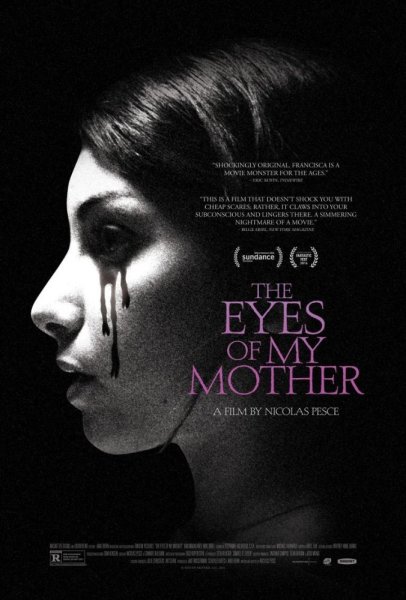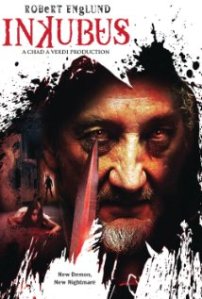
I love historical horror. Set me down with the collected works of M.R. James and I won’t notice a ten-car pile-up outside my window. I am here for basically ever period Dracula film ever made. Carmilla is one of my favorite novellas. The Turn of the Screw is one of my favorite operas. I even love Pride and Prejudice and Zombies and Abraham Lincoln, Vampire Hunter, fight me. So despite a loathing for Westerns so intense that I cannot even bring myself to watch Heath Ledger and Jake Gyllenhaal get it on, I was immediately interested in Dead Birds. There’s horror, there’s a haunted house, there are erstwhile Confederate soldiers getting murdered in disgusting ways, count me in.
So did it live up to my hopes? Well…
Dead Birds is one of those movies with which you can play Professional Movie Review Bingo. You already know all the buzzwords that will be applied to it. Creepy. Atmospheric. Dread. Slow burn. And all of those things apply, they honestly do. But it’s hard not to feel like the story of the movie is a story of wasted potential.
The plot goes like this. There is a bank robbery in which people with brick-thick Southern accents kill each other, and we, the viewer, are somehow supposed to figure out which team we’re on. The bank robbers – a team composed of Confederate Leader, Token Woman, Token Black Guy, Token Kid, That Asshole, and That Other Asshole – set out to find a plantation where, they’ve been told, they can hole up until they’re ready to set out for Mexico and distribute their ill-gotten gains among them. Along the way, they receive the stereotypical Grim Warning not to approach Camp Crystal Lake, this time from a guy looting the random dead like your player character in Resident Evil.
Regardless, they go anyway. The approach to the plantation is one of the more effective settings of the movie – the mansion is a run-down, lifeless, ominous grey building seen in the distance, surrounded in what seems like every direction by dead corn and creepy scarecrows. Once inside the plantation, things only get worse. Some people hear voices. Some people see visions. Some people just straight get eaten by, again, Resident Evil-esque life forms.
(Now that I think of it, this would be a really good game for the RA franchise. It’s the sort of environment that would be amazing if explored in your own time, but suffers from having to follow a camera around.)
Anyway, all these happenings eventually reveal a sort of backstory involving the owner of the plantation, his dead wife, and the plot of Fullmetal Alchemist. People are picked off one by one, and it ends with what I cannot help but see as a really odd homage to Night of the Living Dead, though it would take a fairly long chapter in a George Romero academic festschrift before I could explain exactly why.
As an episode of an anthology like Fear Itself, this movie would have been well above par. Given a half-hour longer a run time and better pacing so that it could go into deeper and more resonant issues than “Look, someone’s getting eaten right now,” it might have been a powerful and memorable movie. The raw material was there. But too much time was spent on irrelevant things, too little time was spent on character building and backstory, and the movie just never quite catches fire.
Did I enjoy watching Dead Birds? Yes. Do I wish it had been a better movie? Also yes. At 90 minutes it could easily have spend more time on the backstory than a couple of fast-cut flashbacks with the same monsters (pancake-makeup-white faces, black eye holes, and mouths full of sharp teeth) that you see in every third horror movie on literally any topic. There was an awful lot that was wasted here that could otherwise have really resonated in the modern era: the plantation owner’s use of his slaves and finally his children to carry out unholy experiments, love that can’t let the dead go (there is the faintest, most faraway echo among the plantation owner and his wife, Confederate Leader and his brother, and Confederate Leader and his girlfriend, and it could have been so complex and deep BUT), and the inevitability of human covetousness and the Bad Things that ensue.
If the movie had gone on for another 45 minutes, maybe all of these things could have been explored. Hell, I’ve seen shorts do it in 15. I just wish this movie had done it too.
So what’s the bottom line? Three stars. Dead Birds has atmosphere and acting talent to burn (including that kid who was in E.T. and holy shit when did he become a buff adult man), good practical effects, and what could have been an interesting plot. It just never quite comes together. Whether that’s the fault of the script or the fault of the run time is debatable. Either way, watch it on Shudder where it’s free, or rent The Wind on VOD.
 Because come on. Come on. No one is going to give The Eyes of My Mother less than five stars. I don’t care how contrarian you are; I don’t care how much you hate “artsy” movies; I don’t care how opposed you are to all that is beautiful and clear and flawlessly done in a world where the ugly, the graceless, and the inept are increasingly lionized. If you give this movie fewer than the maximum number of stars, you know in your heart that you are lying; and furthermore, that you are a bitter, cane-shaking old coot who shouts at clouds about those damn kids and their stupid making better movies than your favs from the 70s.
Because come on. Come on. No one is going to give The Eyes of My Mother less than five stars. I don’t care how contrarian you are; I don’t care how much you hate “artsy” movies; I don’t care how opposed you are to all that is beautiful and clear and flawlessly done in a world where the ugly, the graceless, and the inept are increasingly lionized. If you give this movie fewer than the maximum number of stars, you know in your heart that you are lying; and furthermore, that you are a bitter, cane-shaking old coot who shouts at clouds about those damn kids and their stupid making better movies than your favs from the 70s. I put off watching The Blackcoat’s Daughter/February for all the usual reasons – release delays and renaming followed by limited festival release and direct-to-VOD do not usually bode well for a movie. After seeing it, I’m a little annoyed about all the tribulations this movie had to go through to make it to my TV. And I’m not entirely down with the renaming – The Blackcoat’s Daughter is a more attention-getting name, I guess, but February is the name of this film’s soul.
I put off watching The Blackcoat’s Daughter/February for all the usual reasons – release delays and renaming followed by limited festival release and direct-to-VOD do not usually bode well for a movie. After seeing it, I’m a little annoyed about all the tribulations this movie had to go through to make it to my TV. And I’m not entirely down with the renaming – The Blackcoat’s Daughter is a more attention-getting name, I guess, but February is the name of this film’s soul. I’m going to be up-front about my biases here: any movie that plays the Gratuitous Animal Death card gets on my shit list and has a whole lot of digging to do to get out. Not only do I just not like seeing animals die onscreen – or offscreen, for that matter – but I think it’s the horror equivalent of a Hallmark movie – a cheap and insultingly obvious bid for emotional investment that never, ever works to the benefit of the movie. The Autopsy of Jane Doe plays that card early on, and while I admit that the topic was handled with more respect and care than is usual for horror movies, it put the movie ten strokes down and nine to play, and in the end, the movie couldn’t afford to lose the points.
I’m going to be up-front about my biases here: any movie that plays the Gratuitous Animal Death card gets on my shit list and has a whole lot of digging to do to get out. Not only do I just not like seeing animals die onscreen – or offscreen, for that matter – but I think it’s the horror equivalent of a Hallmark movie – a cheap and insultingly obvious bid for emotional investment that never, ever works to the benefit of the movie. The Autopsy of Jane Doe plays that card early on, and while I admit that the topic was handled with more respect and care than is usual for horror movies, it put the movie ten strokes down and nine to play, and in the end, the movie couldn’t afford to lose the points. This is how little I pay attention to things: I just now, watching Let Us Prey, realized that there is an entire subgenre of horror that I will call “Hell Comes to Improbably Small Police Stations.”
This is how little I pay attention to things: I just now, watching Let Us Prey, realized that there is an entire subgenre of horror that I will call “Hell Comes to Improbably Small Police Stations.” I have an enormously, wretchedly conflicted relationship with the Conjuring franchise.
I have an enormously, wretchedly conflicted relationship with the Conjuring franchise. We Are Still Here is a slow creeper of a movie that ratchets up to a gorefest of an end that is weirdly, viscerally satisfying. Paul (Andrew Sensenig) and Anne (genre veteran Barbara Crampton), grieving over the death of their son in a car accident, move into an old farmhouse outside a small town. Weird Things begin happening, and shortly we are introduced to the Dagmars, a relentlessly nasty family of ghosts who want their house back. Which would be bad enough… except that the townspeople want Paul and Anne as sacrifices to whatever dark forces are buried beneath the house. Faced with ghosts on one side and murderous townspeople on the other, Paul and Anne are in a world of hurt.
We Are Still Here is a slow creeper of a movie that ratchets up to a gorefest of an end that is weirdly, viscerally satisfying. Paul (Andrew Sensenig) and Anne (genre veteran Barbara Crampton), grieving over the death of their son in a car accident, move into an old farmhouse outside a small town. Weird Things begin happening, and shortly we are introduced to the Dagmars, a relentlessly nasty family of ghosts who want their house back. Which would be bad enough… except that the townspeople want Paul and Anne as sacrifices to whatever dark forces are buried beneath the house. Faced with ghosts on one side and murderous townspeople on the other, Paul and Anne are in a world of hurt.
 I’m a big James Wan fan, so I was pleased to find that Dead Silence is a tremendously underrated piece of Gothic awesomeness.
I’m a big James Wan fan, so I was pleased to find that Dead Silence is a tremendously underrated piece of Gothic awesomeness.
